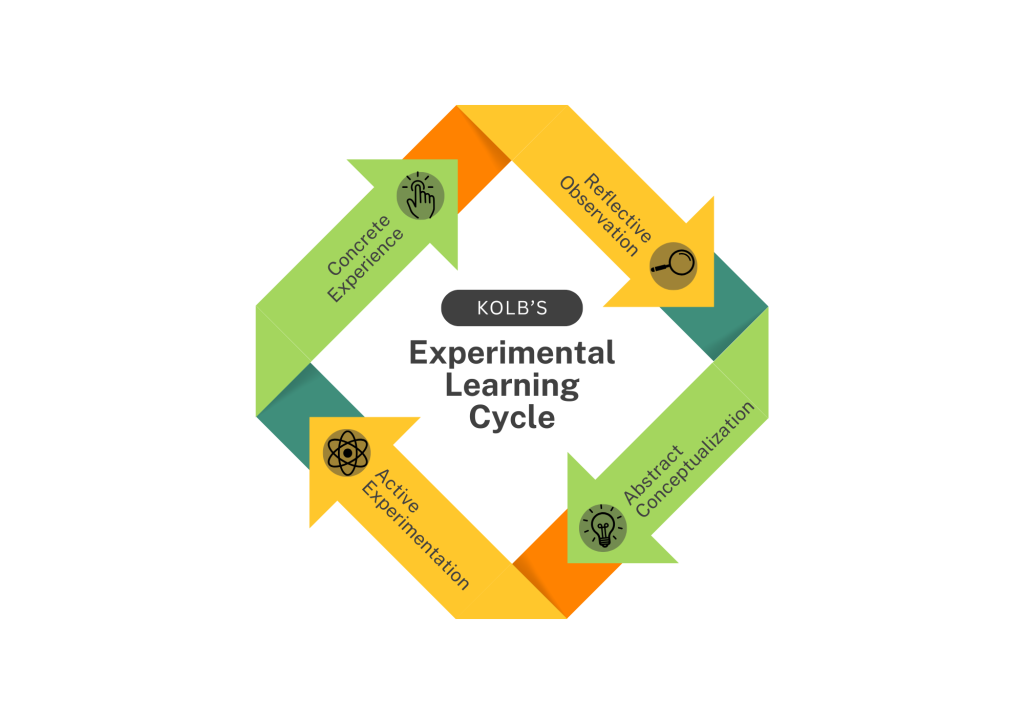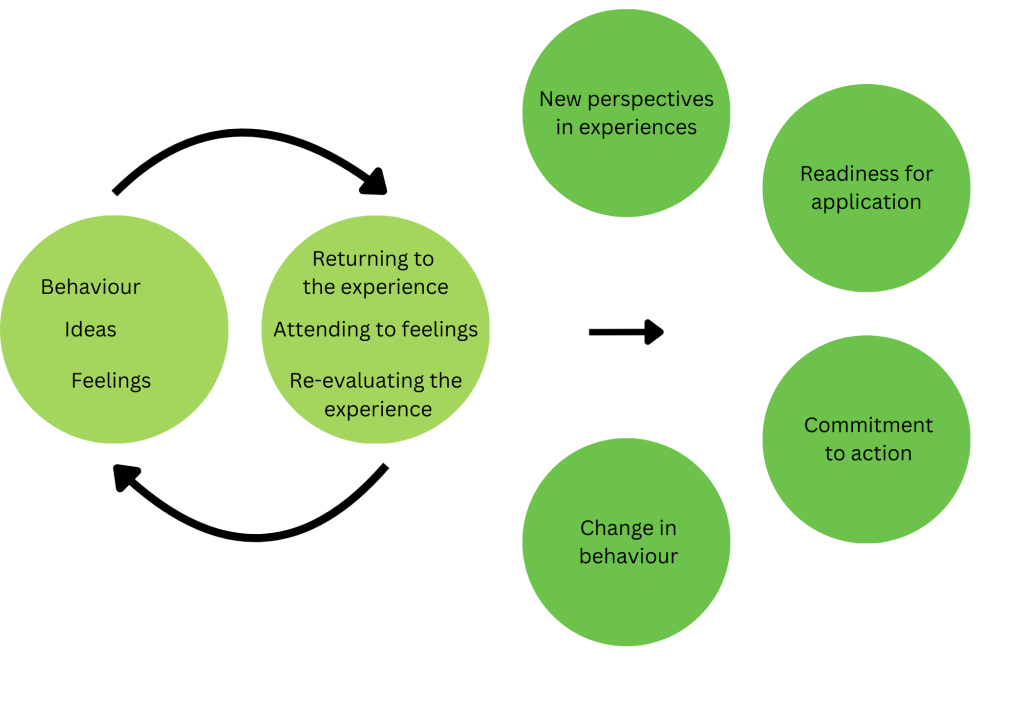1.11 Reflective practice
In previous chapters you have learned about foundational concepts that underpin your learning and speech pathology practice. These have included aspects such professional and ethical practice, evidence-based practice, clinical reasoning, and culturally responsive practice. In learning about the Professional Standards for Speech Pathologists in Australia (SPA, 2020), you will have noted that the second domain of the standards is related to Reflective practice and lifelong learning. As outlined in the Professional Standards, this domains includes professional and personal elements such as demonstrating self-awareness, critical reflection to guide your development and practice, planning personal development goals, engaging in learning, contributing to the evidence base, and using information from a range of sources. Each of these elements requires you to reflect on your learning and practice, in order to identify strengths and weaknesses, and opportunities for growth or enhanced practice.
1.11.1 What is reflective practice?
Reflective practice means engaging in a conscious continuous cycle of self-awareness, self-reflection, self-observation and self-evaluation in order to better understand your actions and reactions (Boud, 1985). Reflective practice is generally captured or articulated in some way such as through discussion with others (e.g. discussions with peers, supervisors, mentors or critical friends) or writing (e.g. reflective journals, logs, written summaries, reflective essays, reflective templates). The goal of reflective practice is not necessarily to address a specific problem or question, but to reflect on and refine practice more broadly on an ongoing basis. As outlined, reflective practice is a continuous cycle and as such, contributes to lifelong learning. Reflective practice underpins the development of new skills and knowledge, as well as helping to develop your responsive capacity that contributes to building relationships, managing your emotions and coping abilities, and making decisions.
The video below provides an overview of reflective practice for health professionals.
Reflective Practice by Clinical Excellence Commission
1.11.2 Theories and models of reflective practice
Various theories and models inform and underpin reflective practice. It doesn’t particularly matter which theory or approach you adopt in your reflective practice, the most important factor is that you engage in reflective practice. Use a model that you feel meets your personal and professional needs for a specific context. During your undergraduate training, you will have the opportunity to engage with different models and approaches of reflective practice.
Some of the more common theories and models used in healthcare include the following:
The Schön Reflective Model
Schön’s (1991) Reflection in action/Reflection on action provides a model for reflective during an event or experience (hence the term ‘reflection in action’), or directly after an event of experience (hence the term ‘reflection on action’). Schön emphasized the importance of these two types of reflection in professional development, suggesting that learning is enhanced when professionals engage in both reflective processes. Reflection-in-action allows for immediate problem-solving, while reflection-on-action helps refine practice over time.
- Reflection-in-Action (as it happens): This type of reflection occurs during the action itself. Professionals think on their feet, adjusting their approach in real time as new situations arise. It involves tacit knowledge and intuition, where the practitioner is actively reflecting and making decisions while performing a task, often without fully articulating their reasoning.
- Reflection-on-Action (afterwards): This type of reflection happens after the action has been completed. It involves looking back on the experience to evaluate what went well, what didn’t, and why. It is a more deliberate, analytical process where the practitioner reflects on past actions to improve future performance.
Experiential learning theory
Kolb’s Experiential Learning Theory (1984) is based on the idea that learning is a process of cyclical reflection and subsequent action. He proposed that individuals learn best when they actively engage in the learning process through a four-stage cycle. The stages of the cycle (Figure 8) are:
- Concrete Experience (CE): This is the stage where learners have a direct experience. It could be a hands-on task, an activity, or an event where new information is encountered.
- Reflective Observation (RO): After experiencing something, learners reflect on their experiences. They consider what happened, what worked, what didn’t, and how they felt about it. This stage involves thinking critically about the experience.
- Abstract Conceptualization (AC): In this stage, learners develop theories or generalizations based on their reflections. They make sense of the experience by linking it to existing knowledge or creating new ideas and concepts.
- Active Experimentation (AE): Learners apply their new concepts or ideas to the world to see how they work in practice. This stage involves testing theories and making adjustments based on results.

Reflective learning theory
Boud, Keogh, and Walker’s Reflective Learning Theory (1985) emphasizes the importance of reflection in the learning process. Their model focuses on how individuals actively process and make sense of their experiences to develop deeper understanding and learning, contributing to personal and professional growth. The theory consists of three key stages:
- Return to Experience: This initial stage involves revisiting the experience that the learner has gone through. It requires a thoughtful recall or re-examination of the event, action, or situation, considering what happened and how it unfolded.
- Attending to Feelings: In this stage, learners focus on their emotional responses to the experience. Recognizing and processing feelings—whether positive or negative—helps learners understand their emotional involvement and how it may have influenced their actions and outcomes.
- Re-evaluating the Experience: Finally, learners critically analyze the experience in light of new perspectives and insights. This stage involves making sense of the experience, identifying what can be learned from it, and how it can inform future actions or understanding.
The model is conceptualised in Figure 9 below. The first circle refers to the experience you have (e.g. your placement, learning experience, place of work, classroom). The second circle outlines the reflective process. The smaller four circles are the actions taken based on your reflections.

what? so what? now what?
The “What-So What-Now What” model of critical reflection (Rolfe et al., 2001) is a simplistic and practical model that aims to support health professionals to reflect on their experiences, feelings, and actions, and enhancing aspects of personal and professional practice accordingly. The model consists of three key questions:
- What? (describe what happened)
- So what? (analyse and make sense of what happened)
- Now what? (take effective next steps)
| Stage | Focus area | Possible questions to reflect upon |
| What? | Past: Identify and describe the event and what happened |
|
| So What? | Present: Analyse, make sense, and understand the event and what happened |
|
| Now what? | Future: Plan and outline the effective next steps you will take |
|
The video below provides a useful overview of the What? So what? Now What? model of critical reflection.
What is critical reflection?: Introducing the What? So What? Now What? model by the University of Guelph McLaughlin Library is licensed under CC BY 4.0
Activity
Choose one of the models above and:
- Think about an event that has occurred recently. This could be, for example, a learning activity, a workplace event, placement, or group assignment.
- Have a go at reflecting on the event using the model you have chosen.
- Compare different models and see which one you connect with.
Reflective practice means engaging in a conscious continuous cycle of self-awareness, self-reflection, self-observation and self-evaluation in order to better understand your actions and reactions (Boud, 1985).

